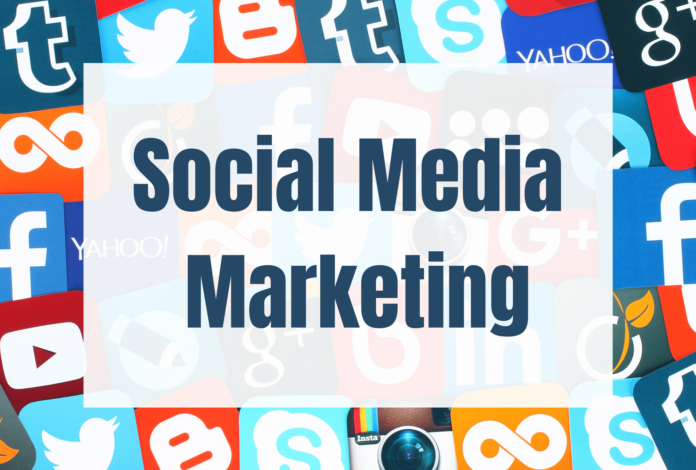Social Media Marketing (SMM): What Is It?
In order to develop a company’s brand, boost sales, and enhance website traffic, social media marketing, sometimes referred to as digital marketing and e-marketing, makes use of social media platforms, where users may create social networks and share information. SMM offers businesses a method to interact with current clients and attract new ones. It also contains data analytics features that enable marketers to monitor the effectiveness of their campaigns and find even more opportunities to interact.
The tremendous expansion of interactive digital channels propelled social media to levels that even challenge the reach of television and radio in the 18 years between 2004 (when MySpace became the first social media site to surpass one million subscribers) and 2022.
More than 80% of consumers say that social media, particularly influencer content, has a significant impact on their purchasing decisions. As a result, marketers from various industries are advancing social media marketing (SMM) from a single tool to a multifaceted source of marketing intelligence on a growing and important audience.
What Makes Social Media Marketing Effective?
Social media’s unrivaled ability in the three key marketing areas of connection, interaction, and customer data is what gives SMM its strength.
Connection: Social media not only makes it possible for companies to connect with customers in previously impractical ways, but it also offers a staggering array of channels through which to reach target audiences, from content platforms like YouTube and social networking sites like Facebook to microblogging services like X platform.
Interaction: Because social media interactions are dynamic, whether through active liking or passive communication, businesses can take advantage of free advertising chances from eWOM (electronic word-of-mouth) recommendations from current and potential customers. The fact that these interactions take place on the social network makes them measurable, in addition to the fact that the positive contagion impact from eWOM is a valuable driver of consumer decisions. Businesses can assess their social equity, or return on investment (ROI), from their social media marketing initiatives, for instance.
Customer Data: Another priceless resource for enhancing marketing outcomes is provided by a well-designed social media marketing strategy. SMM solutions have the ability to not only gather consumer data but also transform this gold into practical market analysis—or even use the data to crowdsource new strategies—instead of being overwhelmed by the 3Vs of big data (volume, variety, and velocity).
The Workings of Social Media Marketing (SMM)
Social media has changed not only how we interact with one another but also how businesses are able to influence consumer behavior. This includes both the promotion of content that increases engagement and the extraction of geographic, demographic, and personal information that enables messaging to resonate with users.
SMM Action Plan
The more targeted your SMM strategy is, the more effective it will be. Hootsuite, a leading software provider in the social media management space, recommends the following action plan to build an SMM campaign that has an execution framework as well as performance metrics:4
- Align SMM goals to clear business objectives
- Learn your target customer (age, location, income, job title, industry, interests)
- Conduct a competitive analysis of your competition (successes and failures)
- Audit your current SMM (successes and failures)
- Create a calendar for SMM content delivery
- Create best-in-class content
- Track performance and adjust SMM strategy as needed
Management of customer relationships (CRM)
Social media marketing has a number of advantages over traditional marketing, including the ability to use customized customer relationship management (CRM) solutions for both customer-to-customer and firm-to-customer interactions. In other words, SMM can track customer value both directly (via purchases) and indirectly (through product referrals), whereas traditional marketing primarily tracks customer value through recording purchase activity.
Shareable Information
Businesses can also use SMM’s enhanced interconnection to create sticky content, a term used in marketing to describe eye-catching content that draws people in, encourages them to buy things, and then inspires them to share it. The production of shareable content is one of the most crucial ways that social media marketing promotes growth since it not only reaches a previously unreachable audience but also carries the implicit endorsement of a person the recipient knows and trusts.
Acquired Media
SMM is also the best way for a company to gain from customer-generated product reviews and recommendations, which are another type of earned media (a phrase for brand exposure via any manner other than paid advertising).
Viral Advertising
Viral marketing is a sales tactic that aims to accelerate the quick transmission of word-of-mouth product information. It is another SMM strategy that depends on the audience to generate the message. When a marketing message spreads well beyond the intended target market, it is said to have gone viral—a very quick and low-cost technique to boost sales.
Customers are segmented
Companies may make sure their marketing efforts are concentrated on their precise target audiences because consumer segmentation on SMM is far more precise than it is on traditional marketing channels.
Monitoring Metrics
The most crucial social media marketing (SMM) metrics to monitor, according to Sprout Social, are those that are customer-focused: engagement (likes, comments, shares, and clicks); impressions (how often a post appears); reach/virality (how many unique views an SMM post has); share of voice (how far a brand reaches online); referrals (how a user lands on a site); and conversions (when a user makes a purchase on a site). However, the business is focused on another crucial metric: response rate/time (frequency and timeliness of the company’s replies to consumer messages)
The rule is always to match each business goal to a relevant statistic when a company is trying to decide which metrics to track in the sea of data that social media generates. Use a social media analytics tool that evaluates the success of your campaign in relation to that particular aim if your company’s objective is to increase conversions from an SMM campaign by 15% within three months.
The benefits and drawbacks of social media marketing (SMM)
Benefits
A new set of advantages has emerged with the emergence of social media marketing. Social media platforms offer an effective way to connect with and engage with a broad audience, which can help build brand recognition.
Social media interaction with customers can assist to forge more solid bonds and encourage brand loyalty. It’s frequently less expensive than conventional advertising strategies, which makes it more alluring for tiny or newly established enterprises.
The nature of social media marketing has a ton of advantages as well. Sharing links to your blog or website on social media can assist improve traffic to the site and the possibility that visitors will convert. Additionally, social media offers a mechanism to get client input in real-time, enabling immediate connection and straightforward communication.
The benefit of being both broad and focused is another advantage of social media marketing. Through shares, likes, comments, and other types of interaction, social media can assist businesses in reaching a wider audience and increasing engagement. This is especially true when customers share content with those who aren’t customers. On the other side, social media platforms provide a variety of targeting possibilities, allowing businesses to identify particular demographics, hobbies, and behaviors and provide those audiences with tailored content.
Drawbacks
Social media marketing has several drawbacks and challenges despite its abundance of advantages. It takes time and work to establish a good social media presence, and business owners frequently need to post regularly and consistently.
A thorough understanding of the various platforms is necessary for effective social media marketing, as is the capacity to produce interesting content, conduct data analysis, and make data-driven decisions. Every platform has unique requirements and is frequently customized. Additionally, the algorithms and policies of social media platforms are continuously changing, which can make it challenging to forecast and maintain success.
Social media not only makes it simple to engage with customers, but it also gives them a place to air their concerns and frustrations in public. If not handled properly, this could have the unintended effect of creating a public forum that harms a company’s reputation.
Finally, it could be challenging to understand social media marketing ROI accurately. It can be difficult to gauge the success and return on investment of social media marketing because it frequently requires monitoring many metrics, analyzing large data sets, and speculating as to why specific consumer actions may have taken place.
































